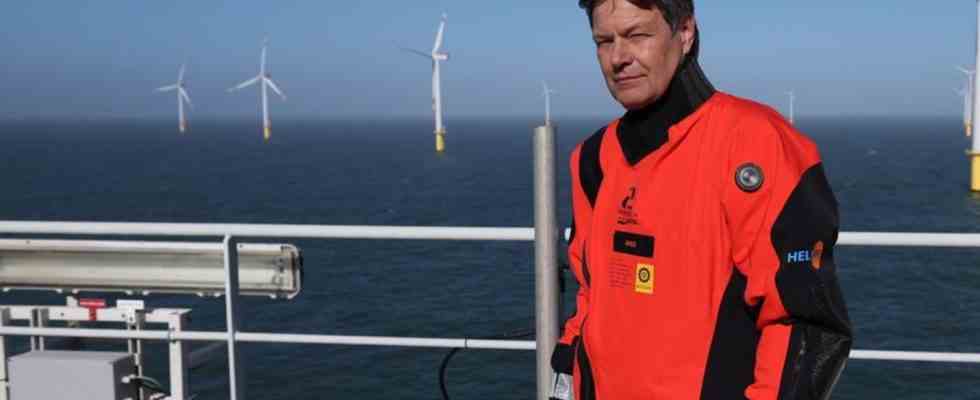energy
Habeck: Expansion targets for offshore wind energy are being achieved
Climate Protection Minister Robert Habeck after the commissioning of the RWE offshore wind farm Kaskasi off Helgoland. photo
© Christian Charisius/dpa/Pool/dpa
The expansion of wind power at sea is progressing – that was the message from Federal Economics Minister Habeck during a visit to Hamburg. He already sees a goal very close.
According to Federal Minister of Economics Robert Habeck (Greens), the expansion of offshore wind power in Germany is being pushed forward consistently.
“According to everything we see and know today, we will achieve the 30 gigawatts in 2030 and maybe even more,” he said during a visit to the Federal Maritime and Hydrographic Agency (BSH) in Hamburg. “Things are looking really good at the moment.” It has already been possible to identify around 40 gigawatts (GW) of space.
In January, the BSH presented a new area development plan for the expansion of offshore wind energy in the coming years. The authority thus determines the specific areas for wind turbines in the North Sea and Baltic Sea, as well as the years in which wind farms are to be put out to tender, commissioned and connected to the grid. The area development plan implements the acceleration measures adopted in the Wind Energy at Sea Act.
Set higher goals
Germany had increased its offshore targets last year. An installed capacity of at least 30 gigawatts by 2030, at least 40 GW by 2035 and at least 70 GW by 2045 is now planned – each with grid connection. According to the information, systems with a capacity of 8 GW are currently in operation in Germany.
“The planning security for 30 gigawatts by 2030 is there, these plans are now to be implemented by the offshore industry,” said Nico Nolte, head of the Marine Order department at the BSH. A large part will be built in the North Sea. The offshore companies could now apply for tenders from the Federal Network Agency for these areas.
“The entire industry is working actively and in close coordination with the political decision-makers to achieve the goals,” said Stefan Thimm, Managing Director of the Federal Association of Offshore Wind Farm Operators, on request. Offshore wind farms could also be an asset for wildlife conservation. “Especially when you consider that these areas were previously used for fishing.”
The German Nature Conservation Union has meanwhile emphasized that it is important to minimize nature conservation conflicts by choosing a wise location. There should be no attempt to accelerate at the expense of the marine environment. “Politicians are called upon to eliminate the real technical and logistical bottlenecks in offshore expansion, including the expansion of the networks and port infrastructure. There are real acceleration options,” said Anne Böhnke-Henrichs, Nabu’s marine protection officer.
RWE wind farm in operation
Around 35 kilometers north of the island of Heligoland, the RWE Kaskasi wind farm started official regular operation today, Thursday, in the presence of Habeck. With an installed capacity of 342 megawatts (MW), Kaskasi can supply more than 400,000 households with green electricity per year. “Kaskasi was the only new wind farm at sea last year,” said Habeck. “The inauguration is intended to mark a turning point. We now want to push ahead with the expansion of offshore wind energy in a coordinated manner.”
The cooperation with the BSH is excellent, stressed Habeck. “With its work on the area development plan, the preliminary investigations and the planning approval procedures for offshore wind farms and grid connection systems, the BSH is an important player in the successful implementation of the energy transition at sea,” said the President of the BSH, Helge Heegewaldt.

